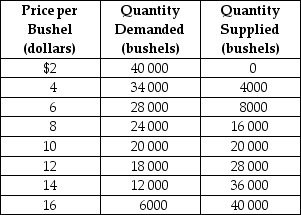Table 5.5  Table 5.5 above contains information about the corn market.Answer the following questions based on this table.
Table 5.5 above contains information about the corn market.Answer the following questions based on this table.
-Refer to Table 5.5.An agricultural price floor is a price that the government guarantees farmers will receive for a particular crop.Suppose the federal government sets a price floor for corn at $12 per bushel.
a.What is the amount of shortage or surplus in the corn market as result of the price floor?
b.If the government agrees to purchase any surplus output at $12, how much will it cost the government?
c.If the government buys all of the farmers' output at the floor price, how many bushels of corn will it have to purchase and how much will it cost the government?
d.Suppose the government buys up all of the farmers' output at the floor price and then sells the output to consumers at whatever price it can get.Under this scheme, what is the price at which the government will be able to sell off all of the output it had purchased from farmers? What is the revenue received from the government's sale?
e.In this problem we have considered two government schemes: (1)a price floor is established and the government purchases any excess output and (2)the government buys all the farmers' output at the floor price and resells at whatever price it can get.Which scheme will taxpayers prefer?
f.Consider again the two schemes.Which scheme will the farmers prefer?
g.Consider again the two schemes.Which scheme will corn buyers prefer?
__________________________________________________________________________________________________________________________________________________________________________________________
Definitions:
British Pound
The currency of the United Kingdom, symbolized as GBP.
Forward Exchange Rate
The agreed-upon exchange rate for currencies to be swapped on a specified future date.
Spot Rate
The current market price at which a particular asset, such as currency or commodity, can be bought or sold for immediate delivery.
Discount
A reduction applied to the regular price of goods or services or the amount by which the present value of future cash flows is reduced for discounting purposes.
Q10: Why should we never assume that an
Q15: Use the general relationship between marginal and
Q23: If the quantity demanded for a good
Q55: Refer to Figure 7.2.The curve labelled 'F'
Q60: Refer to Figure 7.6.In the figure above,
Q104: Refer to Table 6.3.The table above shows
Q162: Briefly explain the economic concept of elasticity.<br>_
Q172: Blu-ray players were introduced to the market
Q179: Which of the following would result in
Q251: A curve that shows combinations of consumption